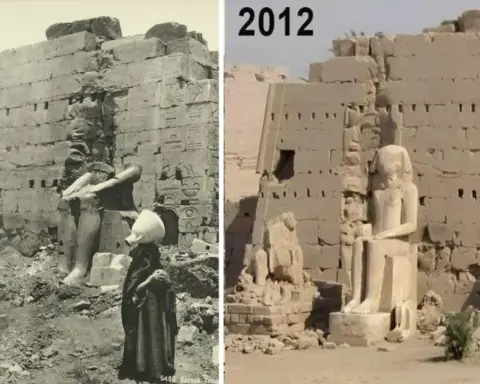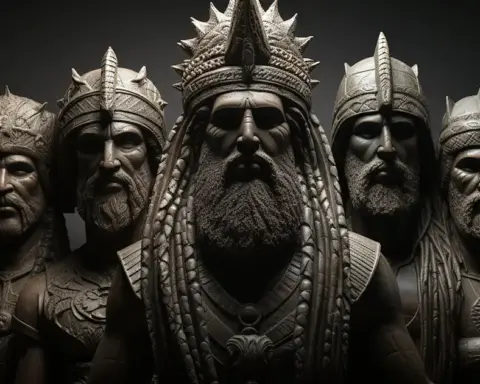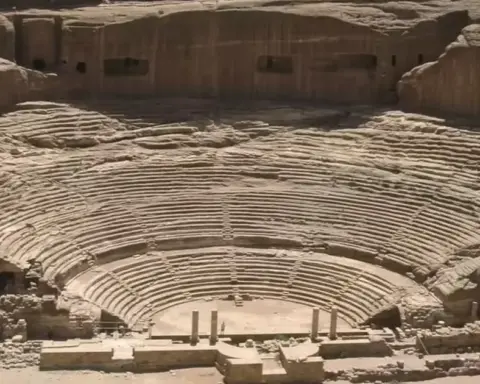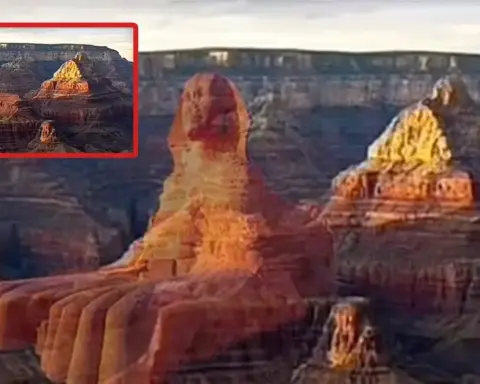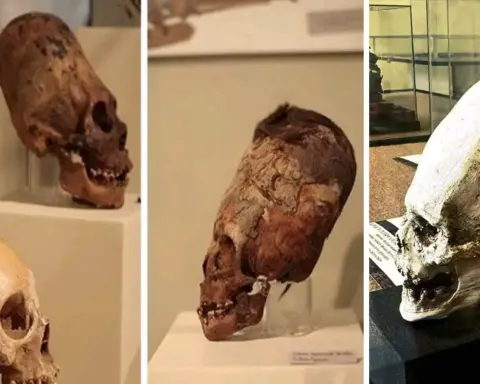In the heart of Utah’s sweeping landscapes lies a mystery as imposing as the sandstone cliffs themselves: the Zion-Mount Carmel Tunnel. Constructed in the 1920s, this tunnel is an engineering marvel, but it’s not just its historical significance that intrigues visitors and researchers alike. There are theories, some more outlandish than others, that surround its creation and purpose, whispering secrets of the past and possibilities of the unknown.
One of the more fantastical theories posits that the entrance to the tunnel, grand and gaping as it stands against the sheer cliff face, is large enough to accommodate an unidentified flying object (UFO). This idea stirs the imagination, painting a picture of extraterrestrial visitors and government conspiracies. Why else, proponents of this theory ask, would such a colossal entryway be necessary, if not to welcome visitors from the stars?
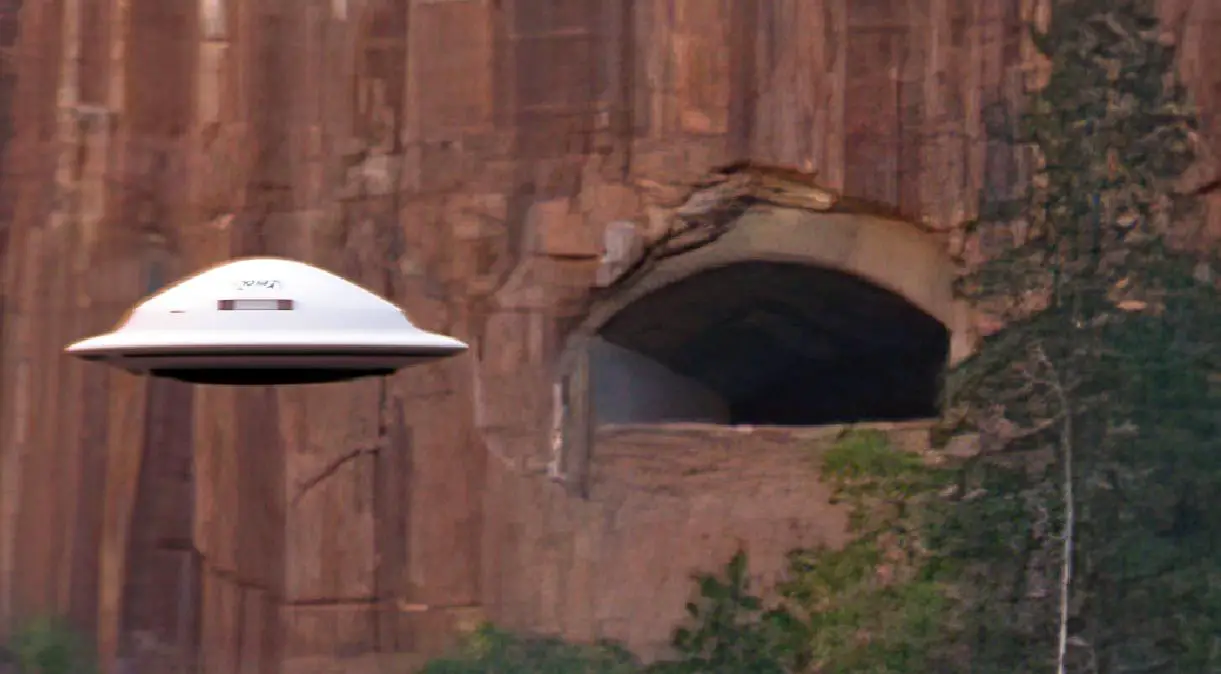
Then some question the very functionality of the tunnel. With an exit seemingly precariously perched, they wonder aloud, “How do you drive through that tunnel? Looks like a big drop-off coming out of the mountain.” This speculation is not without merit, as the tunnel’s exit does indeed emerge at a dizzying height above the canyon floor, challenging the courage of drivers not accustomed to such altitudes. It suggests a road less traveled, one that demands respect for the forces of nature and the boldness of human endeavor.
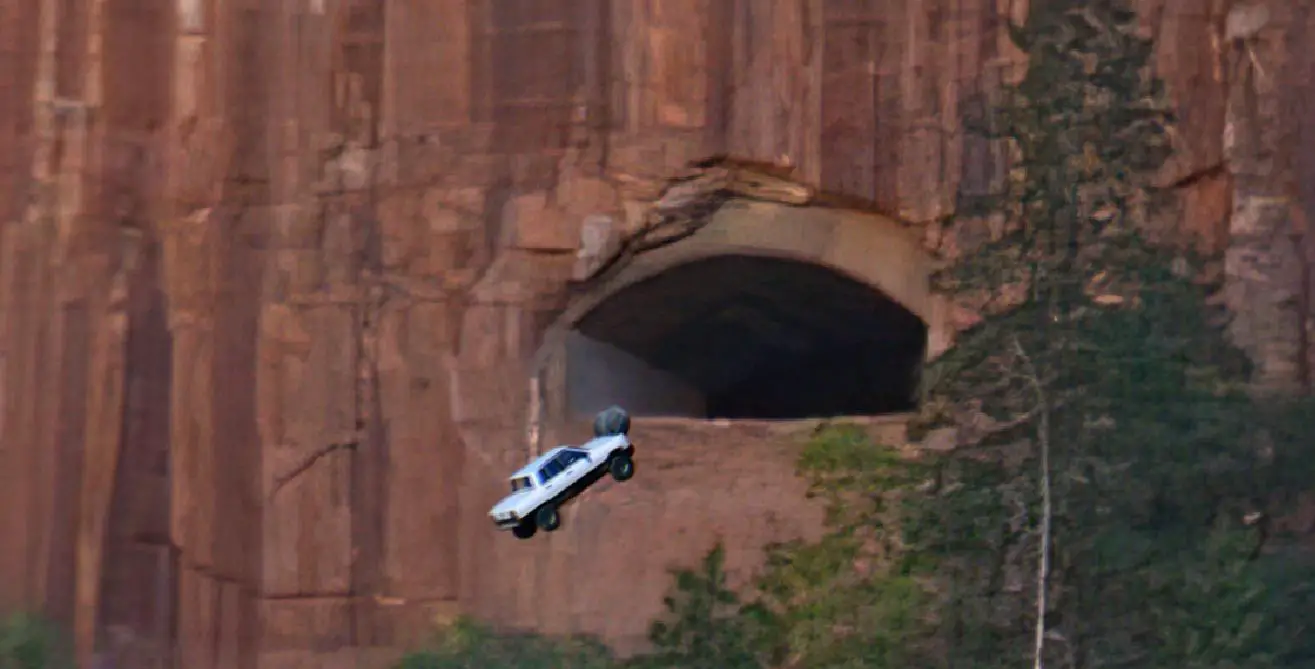
Others look upon the tunnel and see the hands of natural history at work. They theorize that beneath the tunnel’s reinforced concrete lies an ancient cave system, its passageways carved by water and time. This perspective brings forth visions of underground rivers and geological processes, with humanity merely adding a touch of support to what the earth had already crafted. The blend of natural wonder and human reinforcement speaks to a symbiotic relationship between our world and the one that lies beneath.
The most historically grounded theory suggests that this particular section of the tunnel system served multiple practical purposes during construction. These small tunnels, they say, provided essential light and air to the workers as they toiled away in the mountain’s heart. Moreover, these openings were crucial for the removal of debris, allowing the monumental task of tunneling through a mountain to become a reality. It underscores the ingenuity and determination of those who built this passage through the rock.
Despite the allure of these theories, the truth about the Zion-Mount Carmel Tunnel is grounded in its documented history and engineering. The tunnel was indeed an ambitious project, designed to provide a direct route from Zion National Park to the east side of the park and beyond, connecting with Bryce Canyon and the Grand Canyon. Completed in 1930, it spans approximately 1.1 miles and includes several “gallery windows” that open up the side of the mountain to let in light and provide views of the canyon.
The construction of the tunnel was a marvel of its time, involving the careful use of explosives, manual labor, and early machinery. Workers hung from the cliffs to carve out the initial openings for these gallery windows, and the debris from the tunnel excavation was indeed removed through these openings.
The Zion-Mount Carmel Tunnel remains a testament to human ingenuity and the desire to connect and explore, even through formidable natural barriers. It’s a reminder of how history, legends, and the natural world can weave together to create a tapestry of tales and truths, inviting us to look beyond the surface and perhaps, to imagine the impossible.
The tunnel continues to be a functional and vital part of Zion National Park, accommodating thousands of visitors each year. It stands not only as a gateway through the mountain but as a passage through time, echoing the sounds of history and the whispers of mysteries long discussed but never quite solved.


